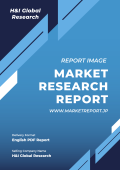| 【英語タイトル】Cold Insulation Market - Growth, Trends, Covid-19 Impact, and Forecasts (2023 - 2028)
|
 | ・商品コード:MOR23MA088
・発行会社(調査会社):Mordor Intelligence
・発行日:2023年1月23日
・ページ数:140
・レポート言語:英語
・レポート形式:PDF
・納品方法:Eメール(受注後2-3営業日)
・調査対象地域:中国、インド、日本、韓国、アメリカ、カナダ、メキシコ、ドイツ、イギリス、フランス、イタリア、ブラジル、アルゼンチン、サウジアラビア、南アフリカ
・産業分野:材料
|
◆販売価格オプション
(消費税別)
※販売価格オプションの説明
※お支払金額:換算金額(日本円)+消費税
※納期:即日〜2営業日(3日以上かかる場合は別途表記又はご連絡)
※お支払方法:納品日+5日以内に請求書を発行・送付(請求書発行日より2ヶ月以内に銀行振込、振込先:三菱UFJ銀行/H&Iグローバルリサーチ株式会社、支払期限と方法は調整可能)
|
❖ レポートの概要 ❖
Mordor Intelligence社の本調査レポートでは、世界の保冷剤市場規模が、予測期間中(2022年~2027年)に年平均5%で成長すると予測しています。本レポートは、保冷剤の世界市場について調べ、イントロダクション、調査手法、エグゼクティブサマリー、市場動向、材料別(ポリウレタンフォーム、ガラス繊維、ポリスチレンフォーム、フェノールフォーム)分析、用途別(石油・ガス、化学品、空調機器、冷蔵)分析、地域別(中国、インド、日本、韓国、アメリカ、カナダ、メキシコ、ドイツ、イギリス、フランス、イタリア、ブラジル、アルゼンチン、サウジアラビア、南アフリカ)分析、競争状況、市場機会・将来の動向など、以下の構成でまとめております。また、Armacell International Holding GmbH、Aspen Aerogels Inc.、BASF SE、Bayer Material Science、CERTAINTEED、Dongsung Finetec International、Dow、Huntsman International LLC、International Corrosion Services LLC、NOVISOL、Owens Corningなどの企業情報が含まれています。
・イントロダクション
・調査手法
・エグゼクティブサマリー
・市場動向
・世界の保冷剤市場規模:材料別
- ポリウレタンフォームにおける市場規模
- ガラス繊維における市場規模
- ポリスチレンフォームにおける市場規模
- フェノールフォームにおける市場規模
・世界の保冷剤市場規模:用途別
- 石油・ガスにおける市場規模
- 化学品における市場規模
- 空調機器における市場規模
- 冷蔵における市場規模
・世界の保冷剤市場規模:地域別
- アジア太平洋の保冷剤市場規模
中国の保冷剤市場規模
インドの保冷剤市場規模
日本の保冷剤市場規模
…
- 北米の保冷剤市場規模
アメリカの保冷剤市場規模
カナダの保冷剤市場規模
メキシコの保冷剤市場規模
…
- ヨーロッパの保冷剤市場規模
ドイツの保冷剤市場規模
イギリスの保冷剤市場規模
イタリアの保冷剤市場規模
…
- 南米/中東の保冷剤市場規模
ブラジルの保冷剤市場規模
アルゼンチンの保冷剤市場規模
サウジアラビアの保冷剤市場規模
…
- その他地域の保冷剤市場規模
・競争状況
・市場機会・将来の動向 |
The market for cold insulation is expected to register a significant CAGR of greater than 5% globally. Growing importance for energy efficiency owing to rising energy costs and increasing concerns toward greenhouse gas emissions are anticipated to further fuel the market growth.
The market is complemented by government backing to increase the energy efficiency of public infrastructure. Diminishing infrastructure spending across various nations, like the United States, Japan, and other Western European countries, along with rising awareness toward energy losses and costs incurred, are expected to have a positive impact on the market.
The market growth is projected to be hampered by a lack of awareness about the cold insulation and unfavorable conditions arising due to the COVID-19 outbreak across the world.
Cold Insulation Market Trends
HVAC to Dominate the Market
- Rigid foams are manufactured by a remarkably strong, low-density, and lightweight structures that are both moisture-resistant and dimensionally stable, along with low-vapor transmission. Due to its two-component application, rigid foams provide flexibility in applications where the building blocks are transformed from liquid to solid foam form.
- Polyurethane foams are extensively used in the construction of walls for buildings and cold storage warehouses, vessels for refrigerated cargo, light-weight products used in construction. These foams are preferred over conventional materials, such as fiberglass and mineral wool, due to their relatively high insulation.
- According to the US Department of Energy, the total heating and cooling costs account for about 50-70% of the energy used in an average American home. Builders are shifting their focus toward rigid polyurethane and polyisocyanurate (polyiso) foams in order to reduce the aforementioned costs and to maintain lower noise levels, along with uniform temperatures in residential and commercial properties.
- There are many benefits of using rigid polyurethane foam insulation, which include its energy efficiency, high performance, versatility, thermal/mechanical performance, and its environment-friendly nature.
- Rigid polyurethane foams are widely applied as wall and roof insulation, insulated panels, and gap fillers for the space around doors and windows.
- Such factors and importance of insulation are expected to contribute to the demand for cold insualtion.
Asia-Pacific Region to Dominate the Market
- Asia-Pacific is anticipated to exhibit significant growth owing to increased construction spending in countries like China, India, and Japan along with favorable government regulations to enhance the energy efficiency of buildings.
- The advent of domestic manufacturers in China is expected to positively impact the market in terms of production. Industrial growth and demand for cryogenic insulation in oil & gas projects is expected to boost the Indian market.
- Another major driving factor is the ever-expanding cold chain market in Asia-Pacific owing to the growing food and healthcare industry. Emerging markets such as China, India, Indonesia, and Vietnam are in the process of rapid growth and industrialization, economic development, and changing lifestyles, the level of production and consumption in the region has escalated rapidly.
- Imminent opportunities such as the adoption of eco-friendly cold insulation products represents a promising growth in the Asia-Pacific market. The companies are at hand with development of plant-based or bio-based insulation products.
- In addition, they are in process of fiber glass insulation produced from 35% recyclable content, thus saving energy costs in production of entirely new products. These products have almost zero Volatile Organic Compounds (VOC). These innovations will cause an increase in demand in the region.
Cold Insulation Market Competitor Analysis
The global cold insulation market is partially consolidated in nature with a few major players dominating a significant portion of the market. Some of the major companies are Owens Corning, Huntsman International LLC, Dow, Armacell, Arabian Fiberglass Insulation Company Ltd, and BASF SE, among others.
Additional Benefits:
- The market estimate (ME) sheet in Excel format
- 3 months of analyst support
1 INTRODUCTION
1.1 Study Assumptions
1.2 Scope of the Study
2 RESEARCH METHODOLOGY
3 EXECUTIVE SUMMARY
4 MARKET DYNAMICS
4.1 Drivers
4.1.1 Rising Demand for Cryogenic Insulation
4.1.2 Growing Need for Energy Efficiency
4.2 Restraints
4.2.1 Unfavorable Conditions Arising Due to COVID-19 Outbreak
4.2.2 Lack of Awareness about Cold Insulation Materials
4.3 Industry Value Chain Analysis
4.4 Porter’s Five Forces Analysis
4.4.1 Bargaining Power of Suppliers
4.4.2 Bargaining Power of Buyers
4.4.3 Threat of New Entrants
4.4.4 Threat of Substitute Products
4.4.5 Degree of Competition
5 MARKET SEGMENTATION
5.1 Material Type
5.1.1 Polyurethane Foam
5.1.2 Fiber Glass
5.1.3 Polystyrene Foam
5.1.4 Phenolic Foam
5.2 Application
5.2.1 Oil and Gas
5.2.2 Chemicals
5.2.3 HVAC
5.2.4 Refrigeration
5.3 Geography
5.3.1 Asia-Pacific
5.3.1.1 China
5.3.1.2 India
5.3.1.3 Japan
5.3.1.4 South Korea
5.3.1.5 Rest of Asia-Pacific
5.3.2 North America
5.3.2.1 United States
5.3.2.2 Canada
5.3.2.3 Mexico
5.3.3 Europe
5.3.3.1 Germany
5.3.3.2 United Kingdom
5.3.3.3 France
5.3.3.4 Italy
5.3.3.5 Rest of Europe
5.3.4 South America
5.3.4.1 Brazil
5.3.4.2 Argentina
5.3.4.3 Rest of South America
5.3.5 Middle-East
5.3.5.1 Saudi Arabia
5.3.5.2 South Africa
5.3.5.3 Rest of Middle-East
6 COMPETITIVE LANDSCAPE
6.1 Mergers and Acquisitions, Joint Ventures, Collaborations, and Agreements
6.2 Market Share (%)/Ranking Analysis**
6.3 Strategies Adopted by Leading Players
6.4 Company Profiles
6.4.1 Armacell International Holding GmbH
6.4.2 Aspen Aerogels Inc.
6.4.3 BASF SE
6.4.4 Bayer Material Science
6.4.5 CERTAINTEED
6.4.6 Dongsung Finetec International
6.4.7 Dow
6.4.8 Huntsman International LLC
6.4.9 International Corrosion Services LLC
6.4.10 NOVISOL
6.4.11 Owens Corning
7 MARKET OPPORTUNITIES AND FUTURE TRENDS
7.1 Increasing R&D through Sustainable Raw Material Sources
7.2 Other Opportunities











